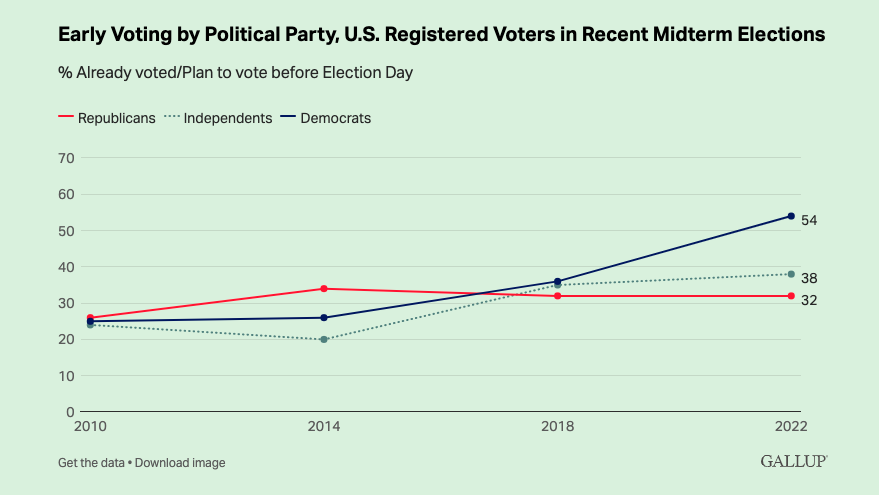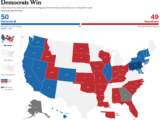By Glynn Wilson –
Public Opinion Analyst –
WASHINGTON, D.C. — While pollsters across the political spectrum are showing a rising problem of predicting the outcome of elections in advance using telephone surveys, Google searches and such, one trend that has been overlooked by many analysts and pundits is the advantage gained by Democrats from a growing trend toward early voting.
According to a new poll out from Gallup, which is not designed specifically to predict the outcome of the midterm elections on Nov. 8, 40 percent of voters this year say they plan to vote early, which will favor Democrats but will not show up on Election Night in some close, key races.
“Four in 10 U.S. registered voters say they plan to vote before Election Day or have already voted, a higher proportion than in recent midterm elections,” Gallup says in its analysis.
A key finding is that far more Democrats say they plan to vote early, 54 percent, compared to only 32 percent of Republicans — a 22-percentage-point difference. Among independents, where elections are usually decided, 38 percent say they plan to vote early this year or have already voted.
Red Mirage v. Blue Wave
“Although early voting has been less common in midterm elections than in presidential elections, more voters will cast their ballots before Election Day this year than in prior midterm election years,” Gallup says. “Partisan differences in early voting that were first seen in 2020 persist today, as do party differences in absentee versus in-person voting. Those differences make it possible that some contests will be subject to a ‘red mirage,’ as occurred in the 2020 election.
“If large numbers of mail ballots are cast, which take more time to count and may tilt significantly toward Democratic candidates, it is possible some Republican candidates leading the vote count on Election Night may end up losing once all ballots are counted,” Gallup concludes.
That is a significant finding, although it won’t make it easy to watch on cable television on Election Night. We won’t know the outcome until all mail-in and absentee ballots are counted, and expect some challenges and recounts, dragging the process out even longer.
The level of early voting is not quite as high as it was in the 2020 presidential election year when the coronavirus pandemic was still raging and before COVID-19 vaccines were available. But it is higher than it was in the midterm elections of 2018, when a Blue Wave kept the Democrats in the majority in the House. This could be building even more of a Blue Wave among women voters especially, with the abortion issue still front and center for a significant percentage of the electorate.
Early voting only became a noticeable trend in the presidential election year of 2020, when Donald Trump raised questions about the security of voting by mail, and the results showed an 18-point party gap. This only hurt Trump and helped propel Democrat Joe Biden to the presidency, with 77 percent of Democrats and only 59 percent of Republicans voting before Election Day.
Early voting is also more prevalent in the West and among older voters.
Over all this year, 63 percent of all registered voters plan to vote in person at their local polling place, while 25 percent say they plan to vote by absentee ballot and only 5 percent are unsure how they will vote.
When asked, 75 percent of Republicans say they will wait until Election Day to vote, compared to 59 percent of independents and 56 percent of Democrats.
In 2020, by comparison, about a third of registered voters, said they planned to vote in person on Election Day, and another third, 31 percent said they would vote in person before Election Day, and 35 percent voted by absentee or mail ballot.
Since many things can happen in voters’ lives to prevent them from showing up at the polls, this clearly favors Democrats. Turnout is key to any election. But if more Democrats by far are voting early, their votes will be counted – it just might take awhile to determine the winner in those key, battleground states, especially the ones where “Big Lie” Trump supporters are running strong against lessor known Democrats.














